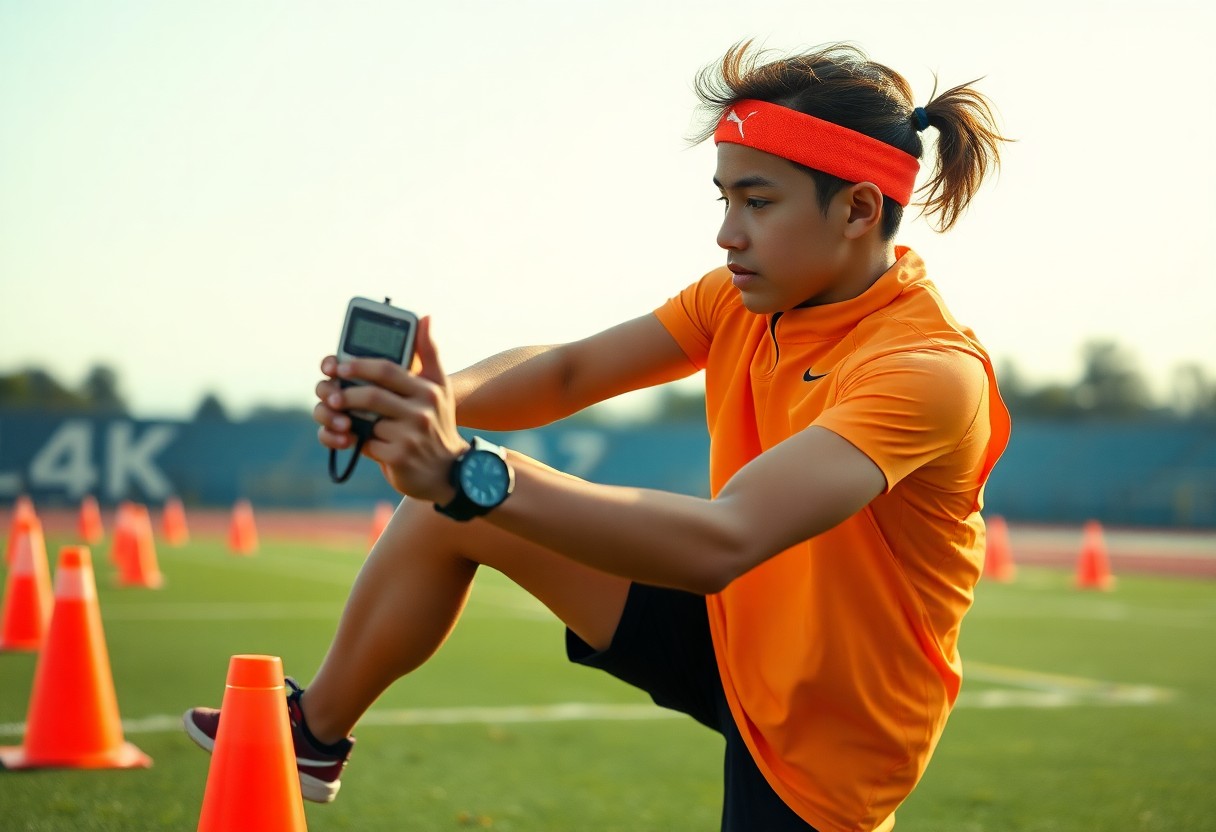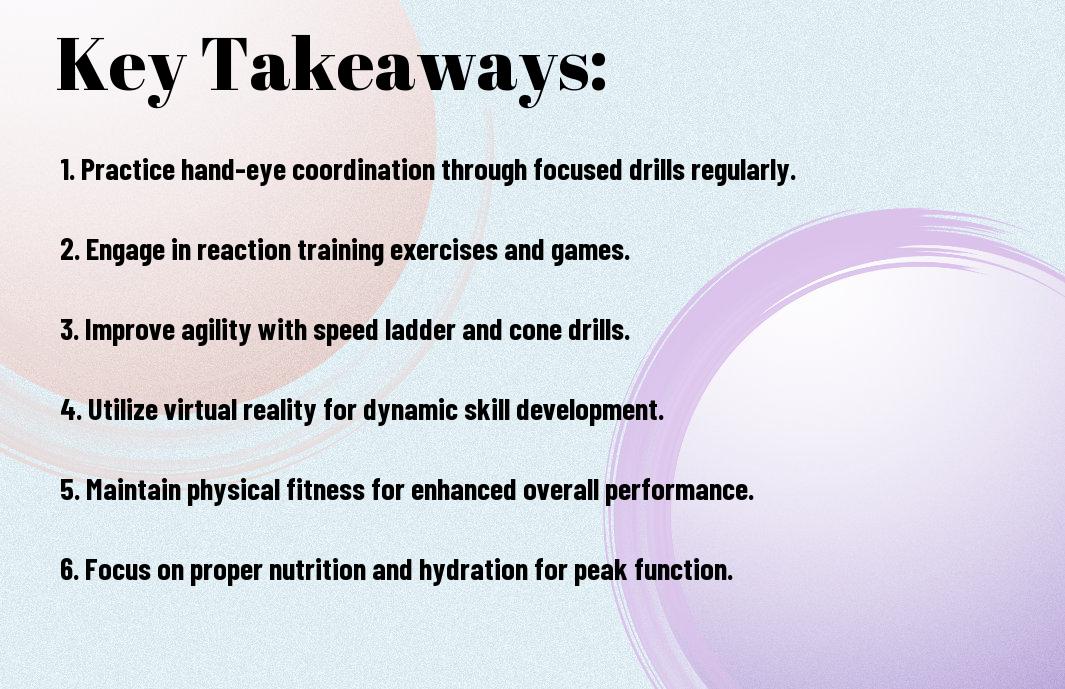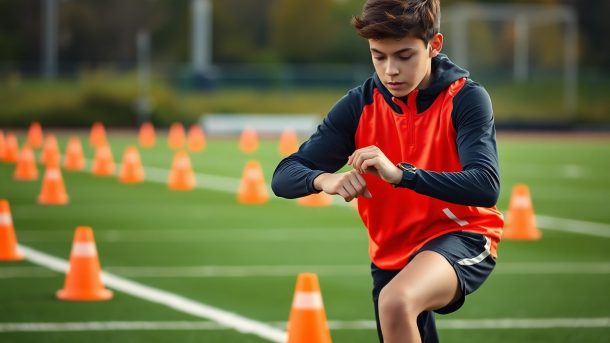Many athletes in fast-paced sports understand that quick reflexes can make the difference between winning and losing. Enhancing your reflexes is not only about natural talent; it involves specific training techniques that sharpen your reaction times and enhance your decision-making under pressure. In this post, you will explore various methods and exercises designed to improve your hand-eye coordination, agility, and overall responsiveness, helping you to excel in your chosen sport.

Key Takeaways:
- Practice Drills: Incorporate specific drills that challenge your reaction time, such as ladder drills, cone sprints, and shadowboxing.
- Reaction Training Gadgets: Utilize tools like reaction balls or light-up boards that prompt quick decision-making and enhance hand-eye coordination.
- Visual Training: Engage in exercises that develop your visual processing speed, such as video games or tracking exercises that require quick shifts in focus.
- Strength and Conditioning: Focus on overall fitness to improve agility and speed, which are necessary to refining reflexes in sports scenarios.
- Mindfulness Techniques: Incorporate practices such as meditation and controlled breathing to heighten awareness and improve focus during high-stress situations in competitions.

Understanding Reflexes in Sports
Before submerging into ways to enhance your reflexes, it’s crucial to understand what reflexes are and their role in sports. Reflexes are automatic responses to stimuli that allow athletes to react swiftly during high-pressure situations. These quick reactions can significantly influence your performance in fast-paced sports, where split-second decisions are vital for success.
The Science of Reflexes
On a physiological level, reflexes are mediated by the nervous system, allowing for rapid communication between sensory inputs and motor outputs. This system relies on specialized neurons to transmit signals efficiently, enabling your body to respond almost instantaneously to external factors, such as an opponent’s movement or a ball coming your way. Understanding these processes can help you develop more effective training regimens.
Types of Reflexes Relevant to Sports
By knowing the different types of reflexes that play a role in sports, you can tailor your training to focus on specific areas for improvement. Key reflexes include:
- Simple reflexes
- Complex reflexes
- Conditioned reflexes
- Motor reflexes
- Proprioceptive reflexes
Any understanding of these reflexes can provide insights into how to refine your athletic performance.
| Type of Reflex | Description |
|---|---|
| Simple Reflexes | Immediate responses like withdrawing your hand from a hot surface. |
| Complex Reflexes | Involves multiple body parts and higher brain functions. |
| Conditioned Reflexes | Learned responses based on past experiences. |
| Motor Reflexes | Direct responses to motor commands, enhancing coordination. |
| Proprioceptive Reflexes | Help you sense body position and movement. |
At this stage, it’s vital to consider how each type of reflex impacts your athletic capabilities. Different sports may call for different reflex adaptations. For example, sports requiring rapid hand-eye coordination will benefit more from refined motor and proprioceptive reflexes. To enhance these reflexes, targeted exercises that promote agility and response time will be effective. Consider the following strategies:
- Agility drills
- Reaction time exercises
- Practicing sport-specific movements
- Incorporating plyometric training
- Utilizing quick decision-making drills
Any improvement in these areas will directly contribute to better overall sports performance.
| Type of Exercise | Benefit |
|---|---|
| Agility Drills | Enhances your ability to change direction quickly. |
| Reaction Time Exercises | Improves your quickness in responding to stimuli. |
| Sport-Specific Movements | Familiarizes your body with game scenarios. |
| Plyometric Training | Boosts explosive strength for faster reactions. |
| Decision-Making Drills | Sharpens strategic thinking under pressure. |
Assessing Your Current Reflexes
Some athletes may think their reflexes are already up to par, but taking the time to assess your current abilities is important for improvement. Understanding your baseline will allow you to identify specific areas that need enhancement. This assessment can involve various tests, both physical and reaction-based, that measure your response times and agility. By evaluating your reflexes, you can set realistic goals and track your progress effectively, paving the way for better performance in fast-paced sports.
Self-Assessment Techniques
Your self-assessment can include simple drills such as tapping your fingers on a surface to measure coordination or reacting to sudden visual or auditory cues. Use a stopwatch to time your responses, and keep a record of your scores. Exercises like ball drops or partner reactions can also help you gauge your reflex speed and timing. Regular practice of these techniques can provide valuable insights, as well as highlight areas that require focus in your training regimen.
Seeking Professional Evaluation
Before venturing into an improvement regimen, it may be beneficial to seek professional evaluation from a coach or sports trainer who specializes in reflex training.
Reflexes play a significant role in your overall performance in sports, and an expert can provide a comprehensive analysis of your reflex capabilities. They may utilize specialized equipment or advanced techniques to assess your response times objectively. With their guidance, you can receive tailored feedback and recommendations that cater to your specific needs, ensuring that your training targets the right areas for improvement.
Drills to Enhance Reaction Time
Keep your training diverse by incorporating various drills that focus on improving your reaction time. From agility ladders to plyometric exercises, each activity challenges your cognitive processing and physical responsiveness. Explore 8 Ways to Train Your Reflexes to optimize your approach and see marked improvements in your performance.
Reaction Time Drills
One effective strategy to enhance your reaction time is through simple coordination drills. These can include catching a tennis ball thrown at varying speeds or using a reaction ball that bounces unpredictably, forcing you to respond quickly.
Sport-Specific Drills
Around your specific sport, integrating drills that mimic gameplay situations can be highly beneficial. For instance, practicing shots with a partner or simulating a defensive maneuver in basketball can enhance your immediate response to real-game scenarios.
It’s important to tailor your sport-specific drills to closely resemble the movements and decisions you’ll face during competition. Incorporate drills that challenge your agility, such as shuttle runs, or reaction-based exercises with a coach serving as a stimulus. This way, you not only condition your body but also train your mind to react swiftly, translating practice into proven performance on the field or court.
Strength and Conditioning for Improved Reflexes
Despite the common misconception that reflexes are solely innate, your strength and conditioning play vital roles in enhancing them. Incorporating targeted training regimens can not only boost your physical capabilities but also sharpen your reaction times. Consider Easy Exercises to Improve Your Reaction Time as part of your training arsenal.
Importance of Strength Training
Importance of strength training cannot be overstated when it comes to improving your reflexes. Building muscle not only enhances overall power but also increases your stability and control, allowing for quicker responses in fast-paced sports. A solid foundation of strength will help you execute movements more effectively and efficiently.
Plyometrics and Agility Workouts
An crucial component of improving your reflexes lies in plyometrics and agility workouts. These high-intensity exercises train your muscles to react faster and develop explosive strength, which is beneficial for rapid movements needed in various sports. Incorporating drills like jump squats, box jumps, and ladder drills will enhance your foot speed and quickness.
In addition, plyometrics and agility workouts increase your body’s ability to absorb and redirect force, ensuring your movements are both powerful and swift. Regularly integrating these explosive exercises into your training routine not only improves your reaction time but also enhances your overall athletic performance, ensuring you’re always one step ahead in competitive scenarios.
Mental Strategies for Faster Reflexes
Many athletes overlook the power of mental strategies when striving for quicker reflexes. Incorporating these techniques into your training can significantly enhance your performance. One effective method is to explore how to Improve Your Reflexes With These 5 Simple Exercises. By enhancing your mental acuity, you can react more swiftly during fast-paced sports.
Visualization Techniques
With visualization techniques, you can mentally rehearse specific movements and scenarios. This practice allows your mind to create a blueprint of success, making it easier for your body to react when under pressure. Spend a few minutes each day visualizing yourself performing your sport, focusing on the speed and precision you aim to achieve.
Focus and Concentration Exercises
Across many sports, honing your focus and concentration can lead to improved reflexes. Having a sharp focus allows you to process information quickly, which is crucial in fast-paced situations. Simple exercises, such as mindful breathing or attention drills, can help enhance your concentration levels.
Even incorporating simple daily exercises like meditation or attention-switching activities can lead to lasting improvements. These practices train your brain to stay present, helping you to identify and react to stimuli faster. Regularly dedicating time to focus and concentration exercises can substantially boost your mental agility on the field or court.
Nutrition and Recovery for Optimal Performance
Now that you’ve established training routines to enhance your reflexes, it’s vital to focus on nutrition and recovery for optimal sports performance. Proper nutrition fuels your body, supports muscle function, and ensures you recover effectively. Prioritize balanced meals that include carbohydrates, proteins, and healthy fats to provide the energy and nutrients your body needs. This holistic approach not only improves your physical capabilities but also sharpens your mental acuity, enabling quicker reactions on the field or court.
Impact of Nutrition on Reflexes
The food you consume plays a significant role in your reflexes. Nutrients like omega-3 fatty acids found in fish and antioxidants from fruits and vegetables can enhance brain function and neural connectivity. By prioritizing a nutrient-rich diet, you can improve your reaction times and mental sharpness, giving you an edge in fast-paced sports.
Importance of Rest and Recovery
Across all athletic disciplines, rest and recovery are vital elements for peak performance. Skipping recovery time can lead to fatigue, decreased reaction speeds, and an increased risk of injury. By allowing your body to recuperate, you enable muscle repair and hormonal balance, which supports better overall performance.
With adequate sleep and active recovery strategies like stretching and foam rolling, your muscles can recover more efficiently, enhancing your reflexes. Incorporating rest days into your training schedule allows your nervous system to recalibrate, ultimately leading to faster reaction times. Prioritize both sleep and active recovery for sustained athletic performance and to maintain your edge in reflex-intensive activities.
Final Words
Upon reflecting on how to improve your reflexes for fast-paced sports, it’s clear that consistent practice and targeted exercises can significantly enhance your performance. Incorporate agility drills, reaction-based training, and proper nutrition into your routine to boost your reflexes. Additionally, consider mindfulness techniques to sharpen your focus. As you commit to these strategies, you will notice increased responsiveness and a more competitive edge in your sport of choice.
FAQ
Q: What are some effective exercises to enhance my reflexes for fast-paced sports?
A: Engaging in a variety of drills can significantly improve your reflexes. Reaction ball drills, where you use a ball that bounces unpredictably, help develop hand-eye coordination. Ladder drills can enhance foot speed and agility, while shadow boxing or sparring in martial arts promotes quick decision-making and reflexes. Incorporating plyometric exercises, such as jump squats or box jumps, also improves explosive power, contributing to better reaction times.
Q: How does practicing mindfulness benefit my reflexes in sports?
A: Mindfulness practice can significantly aid in enhancing your reflexes by improving focus and reducing distractions. By engaging in meditation or breathing exercises, you train your mind to remain present during high-stress situations in sports. This heightened awareness allows you to process stimuli faster and respond more effectively, ultimately leading to quicker reactions during gameplay. Activities like yoga can also enhance your balance and body awareness, further contributing to improved reflexes.
Q: What role does nutrition play in improving my reflexes for fast-paced sports?
A: Nutrition plays an important role in overall performance, including reflex enhancement. Consuming a balanced diet rich in antioxidants, vitamins, and minerals helps maintain optimal brain function and neuronal communication. Foods rich in omega-3 fatty acids, such as fish, walnuts, and flaxseeds, can support cognitive function and reaction time. Staying hydrated is equally crucial, as even mild dehydration can impair cognitive functions and slow reaction times. Regularly fueling your body with nutrient-dense foods can support faster reflexive responses in sports.
